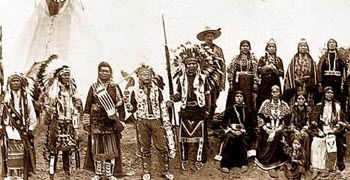French explorers and trappers indiscriminately used and popularized the name "Nez Percé" for the Niimíipuu and nearby Chinook. The name translates as "pierced nose", but only the Chinook used that form of body modification. The Nez Perce tribal name meant "the walking people" or "we, the people")and are the Indigenous people of the Plateau who are presumed to have lived on the Columbia River Plateau in the Pacific Northwest region for at least 11,500 years.
Members of the Sahaptin language group, the Niimíipuu were the dominant people of the Columbia Plateau for much of that time, especially after acquiring the horses that led them to breed the appaloosa horse in the 18th century. Prior to first contact with Western civilization the Nimiipuu were economically and culturally influential in trade and war, interacting with other indigenous nations in a vast network from the western shores of Oregon and Washington, the high plains of Montana, and the northern Great Basin in southern Idaho and northern Nevada. They were key allies for the success of the Lewis and Clark Expedition 1804-1806.
Today they are a federally recognized tribe, the Nez Perce Tribe of Idaho, and govern their Indian reservation in Idaho through a central government headquartered in Lapwai known as the Nez Perce Tribal Executive Committee (NPTEC). They are one of five federally recognized tribes in the state of Idaho. Some still speak their traditional language, and the Tribe owns and operates two casinos along the Clearwater River (in Kamiah and east of Lewiston), health clinics, a police force and court, community centers, salmon fisheries, radio station, and other things that promote economic and cultural self-determination.
